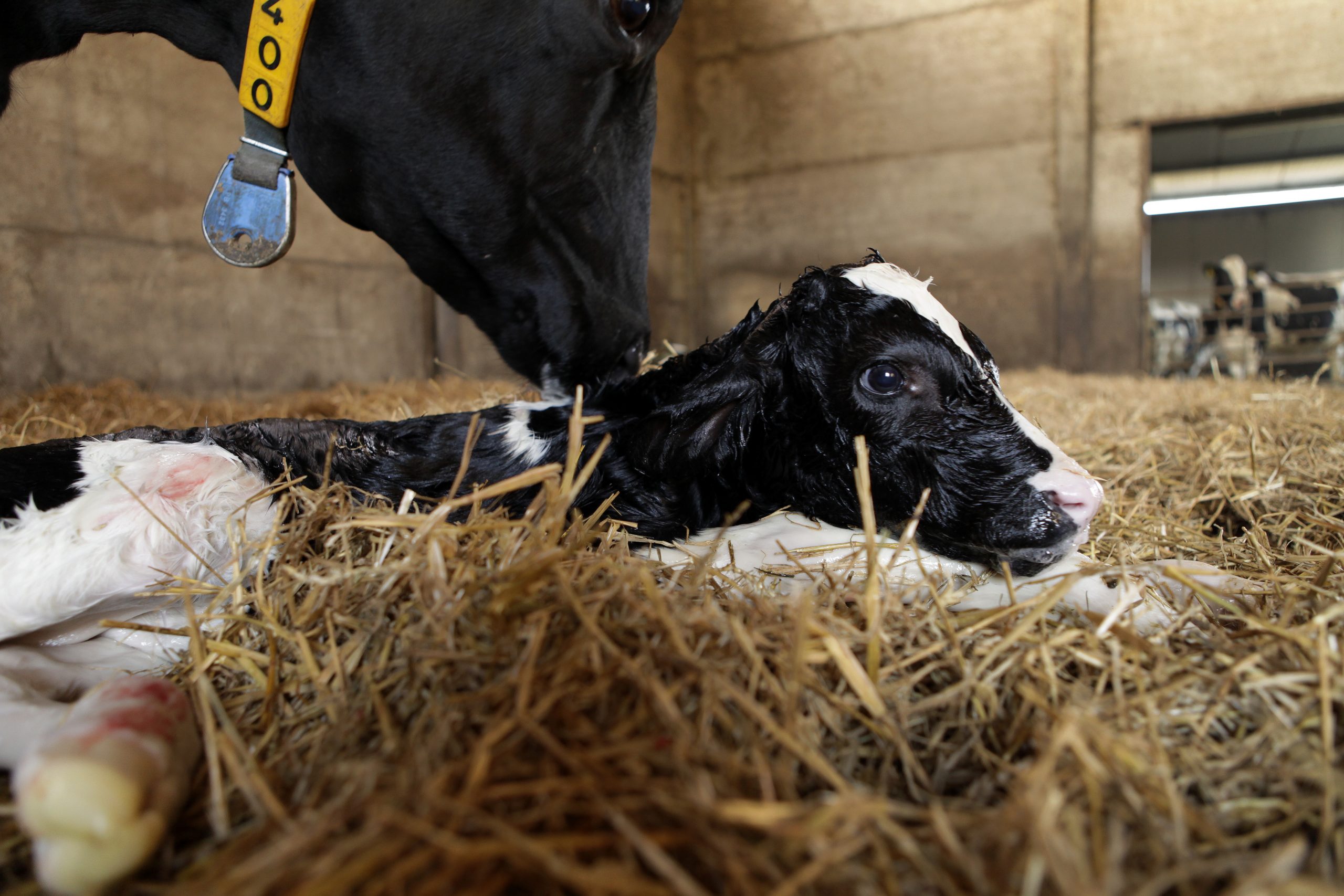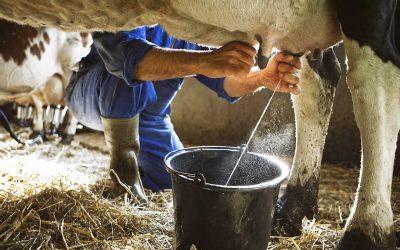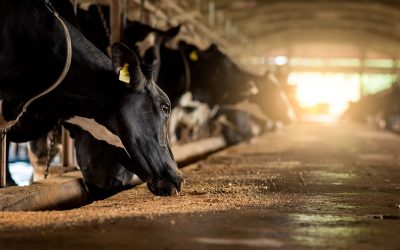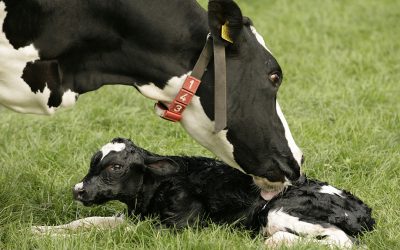Nutrition is key for transition cows

Nutritional management of cows during the transition period can have substantial effects on reproductive success. This was concluded from a large literature review.
Poor reproductive performance of lactating dairy cattle is a complex disorder that reflects associations with intensification of production and increased milk production. However, it is difficult to determine a causal basis for the decrease in fertility, as genetics and environment have changed markedly over the last decades. Nutritional influences on fertility have been examined and frequently reviewed, but difficulties and inconsistencies in study design occur. Studies must have large numbers of experimental units to identify biologically and economically important differences in proportion of cows pregnant. Nutritional influences during the transition period may be of particular importance, but it is clear that the effect of diet on fertility during this period is complex and multifactorial. The objective of the current study was to use carefully described dietary information from the available literature to explore the effects of the diet during the transition period on measures of pregnancy and calving to pregnancy interval as well as identifying factors that may explain variation in these responses. This research looked at 118 diets contained within 39 experiments to see what the effects on nutritional interventions fed during the early postpartum period.
Higher milk output, lower fertility
The extensive literature has observed that cows with greater milk production generally have poorer fertility, and that genetic selection for increased production can reduce fertility. Whereas genetic differences were not examined in this data set, the researchers identified associations between increased milk fat (kg/d) and protein production (kg/d) with reductions in the proportion pregnant, actual milk yield (kg/d), and milk protein yield (100 g/d) with longer calving to pregnancy interval. They also found that protein yield in very early lactation (first 3 weeks of lactation) was positively associated with the proportion of first services that resulted in pregnancy, and others identified positive associations between milk protein percentage and improved reproductive performance. These findings, overall, highlight possible differences between experiments conducted at the level of the individual and those at the group level. As milk protein production increases in a group of cows, it may be expected that nutrient intakes will need to be more closely aligned with nutrient losses, whereas the individual within the herd with greater production may have better phenotypic adaptation to the environment allowing greater milk protein yield and percentage.
Focus on nutrient balance and BCS
The availability of nutrients that can be allocated to reproduction is not just determined by immediate diet (i.e. the immediate intake of nutrients as dry matter intake (DMI)), but also by endogenous body tissue reserves, reflected in labile body weight (BW) and body condition score (BCS). Hence, DMI before and after calving is a key determinant of exogenous nutrient availability. The irreversible loss of nutrients in milk production and use of nutrients for maintenance and growth diminishes the nutrient pool available for reproduction. The difference between dietary intake and expenditure determines the nutrient balance, and if a negative balance occurs endogenous reserves are depleted. Many studies have examined the effects of estimated negative energy balance on fertility. The length and severity of a negative energy balance at the onset of lactation is largely determined by DMI around calving and milk yield. Estimated energy balance (MJ/d) was, as anticipated, positively associated with improved proportion pregnant and shorter calving to pregnancy interval. A better energy balance during the first 3 to 4 weeks of lactation reduces the interval to first ovulation and increases the probability of pregnancy at the following breeding. Excessively low or high BCS at calving, or extreme losses of BW or BCS in early lactation, are usually associated with impaired reproductive outcomes.

Importance of protein and amino acids
Although less well explored than metabolisable energy (ME) balance, metabolisable protein (MP) balance is also important for successful reproduction. In this review study, improved early-lactation MP balance tended to increase the proportion pregnant. Increasing crude protein (CP) intake may increase nutrient loss via increased milk production and have negative effects on fertility, in association with higher urea nitrogen concentrations in blood. Increasing CP content of the diet does not necessarily increase MP availability, but decreasing the degradability of protein or increasing the fermentability of the diet may be more effective in increasing MP availability. The review also highlights that alterations in dietary protein may not simply affect MP balance, but also specific amino acids (AA) composition and supply of metabolisable AA. Specific roles for AA in reproductive performance are not well defined. Lysine and methionine have been suggested to be the most co-limiting AA for production, and supplementation of these may increase milk yield, but results are inconsistent. Supplementation of lactating cows with rumen-protected methionine or lysine has had positive or negligible effects on reproductive outcomes.
Positive effects of fatty acids
Microbial lipolysis and biohydrogenation in the rumen ensure that intake of fatty acids and those available for absorption in the duodenum differ; hence, these issues were explored separately. Fats not only provide an energy source but also are essential precursors for steroid hormones, and the beneficial effects of fat have been observed independently of the provision of energy. The researchers of this review noted that intakes of many of the fats (C14:0, C16:1, C18:0, C18:1 trans, C18:1 cis, and other, g/d) were uni-variably associated with an increased proportion of cows pregnant. No association was found between C18:3 identified with the proportion of cows pregnant, but fatty acids present in fish oil, docosahexaenoic acid, docosapentaenoic acid, and eicosapentaenoic acid are included in the other fatty acids associated with the proportion of cows pregnant.
Role of carbohydrates
Carbohydrates are important sources of energy for cows, as well as for rumen microorganisms and generally increase the efficiency of protein utilisation and microbial protein production. However, increased concentrations of rapidly fermentable carbohydrates can increase the risk of acidosis. The type of carbohydrate also influences the risk of acidosis, with sugars posing a greater risk than starches. Consequently, carbohydrates have positive and negative effects on fertility. The positive associations of starch percentage and intake (kg/d), possibly because of a slower fermentation rate than sugars, and negative associations of soluble fibre and sugar percentage and intake (kg/d) with proportion pregnant were identified in uni-variable analyses. The review also mentioned that a negative association was found between increased CPM-estimated physically effective NDF intake (kg/d) and proportion pregnant in the uni-variable analysis. The only variable that remained in the multivariable models was the effect of sugar intake (kg/d), which was negatively associated with the proportion of cows pregnant. Ruminal acidosis may decrease fertility by reducing feed intake, producing a metabolic acidosis leading to detrimental alteration of uterine environment, stimulating inflammation that induces prostaglandin release, and resulting in luteolysis in a process analogous to that of mastitis.
Conclusions
This study highlights several important findings for future research on the effects of transition nutrition on fertility. It confirms that nutritional management of cows during the transition period can have substantial effects on reproductive success, and this finding is consistent with previous meta-analytical studies in this area. Overall, this study confirmed earlier findings that excessive protein intake can impair fertility, but that a positive MP balance is consistent with better fertility. However, it may be necessary to increase protein intake when feeding fats, and other work suggests a need to control the MP balance before calving. The role of specific metabolisable AA needs further study. This study also, critically, identified potential effects of specific carbohydrate fractions, especially sugar (kg/d), starch (kg/d), and physically effective NDF (kg/d) on reproductive outcomes.
This article is a short summary of the original paper: Effects of nutrition on the fertility of lactating dairy cattle, by R.M. Rodney, P. Celi, K. Breinhild, J.E.P. Santos and I.J. Lean, published in the Journal of Dairy Science, Volume 101, Issue 6.











